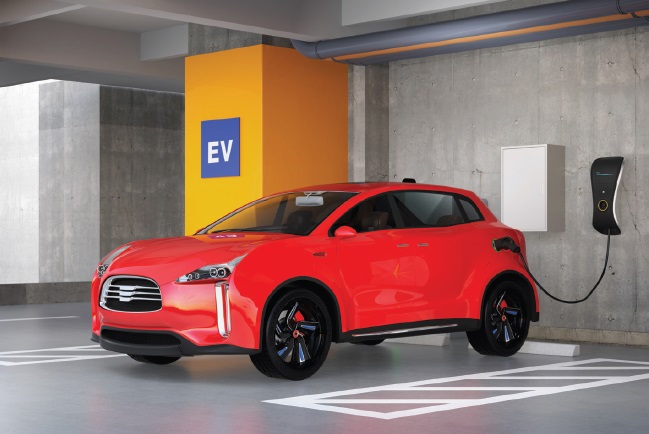Carbon sequestration?
Dr. Edward P. Becker | TLT Automotive Tribology February 2017
New battery consists of an aluminum anode and a porous carbon cathode infused with carbon dioxide and oxygen.

The battery could be recharged with an external electric current, regenerating the aluminum and re-infusing the carbon electrodes.
© Can Stock Photo / chesky
SUPPOSE THERE WAS A WAY FOR YOU to continue your normal driving routine while capturing and sequestering CO
2 without consuming fossil fuels. It sounds too good to be true, but researchers Wajdi I. Al Sadat and Lynden A. Archer at Cornell University appear to have made a big step in that direction (
1).
The battery they are developing consists of an aluminum anode and a porous carbon cathode infused with carbon dioxide and oxygen. The electrochemical reaction inside the cell produces electricity and aluminum oxalate. The researches estimate one kilogram of CO
2 is sequestered for each kilogram of aluminum consumed. Aluminum oxalate is used as a reducing agent in many chemical processes and is, therefore, a useful byproduct.
But refining aluminum from bauxite is an electricity-intensive process. Doesn’t the carbon pollution from the smelting process result in more carbon emissions? Not necessarily. The World Aluminum Association reports that in 2015 about 32% of primary aluminum production was done using hydroelectric or nuclear energy (
2), and future expansion of the industry can be expected to leverage other non-carbon sources such as wind, solar and geothermal energy. Iceland, for example, is currently the 12th-largest producer of aluminum and does it entirely with hydroelectric and geothermal power.
The authors do propose that the battery could be recharged with an external electric current, regenerating the aluminum and re-infusing the carbon electrodes, and in that configuration would work very much like current batteries. However, to realize the carbon sequestration potential, a vehicle would need to be designed around the battery such that the aluminum oxalate could be harvested (in a small tank, perhaps) and the electrodes removed and replaced quickly.
If you thought refueling a hydrogen-powered vehicle was a complex proposal, imagine this sequence. Pull the vehicle up to an oxalate tank and attach a hose to remove the material. Then pop two (or more) ports on the side of the vehicle, remove any remaining aluminum posts and the spent carbon electrodes and replace them with new ones, either carried with you or purchased at the station. The process could be automated to some extent and might not take much more time than a conventional fill-up. As a bonus, if you carried spare electrodes with you, and the oxalate tank was large enough to accommodate several kilos, you could probably drive a substantial distance without visiting a station; just replace the electrodes as they become depleted!
Obviously this technology has a long way to go before its potential for carbon sequestration is realized, but it is already getting attention in a larger community. The December 2016 issue of Scientific American lists this one first in an article titled World Changing Ideas: 10 Big Advances with the Potential to Solve Problems and Improve Life for All of Us.
REFERENCES
1.
Available here.
2.
Available here.
 Ed Becker is an STLE Fellow and past president. He is president of Friction & Wear Solutions, LLC, in Brighton, Mich., and can be reached through his website at www.frictionandwearsolutions.com
Ed Becker is an STLE Fellow and past president. He is president of Friction & Wear Solutions, LLC, in Brighton, Mich., and can be reached through his website at www.frictionandwearsolutions.com.